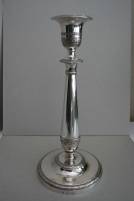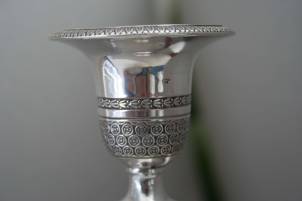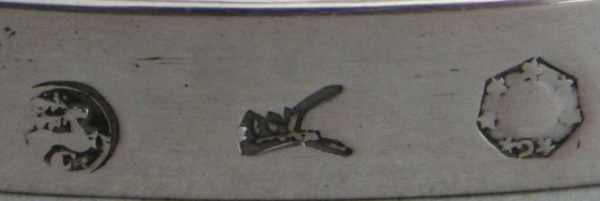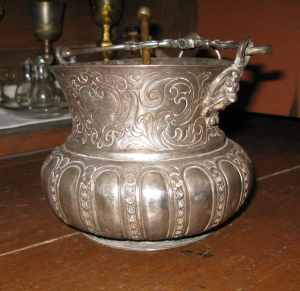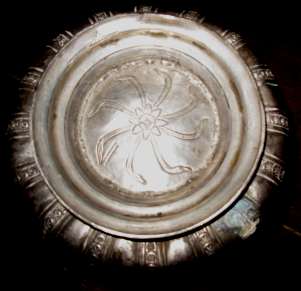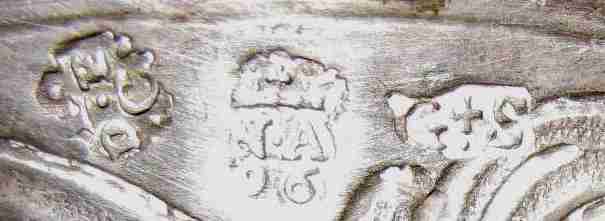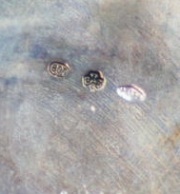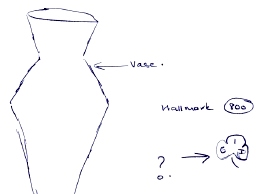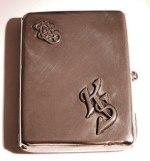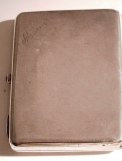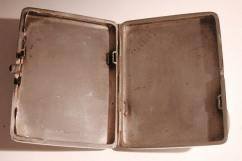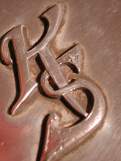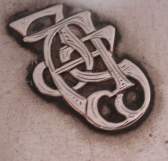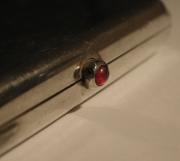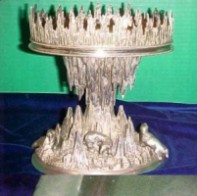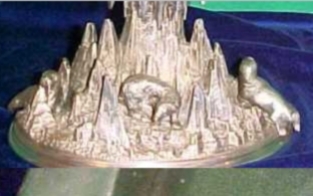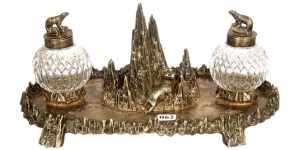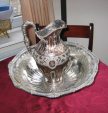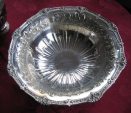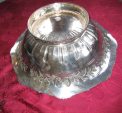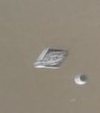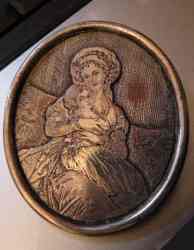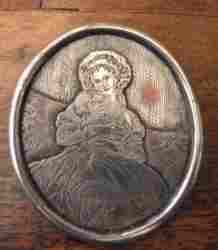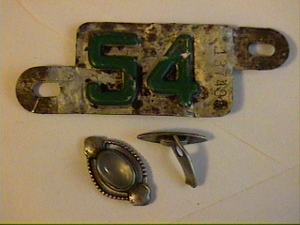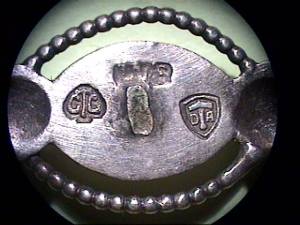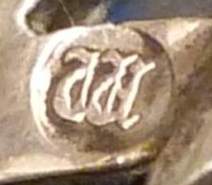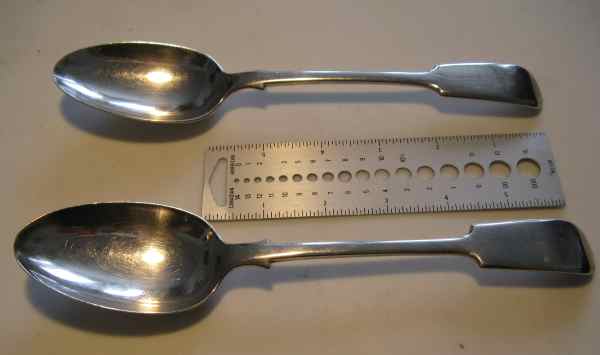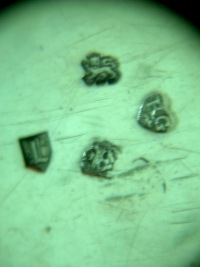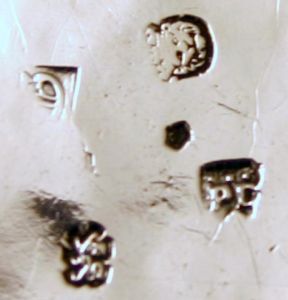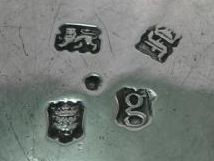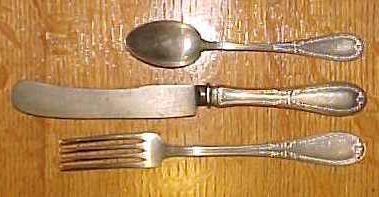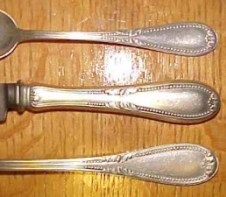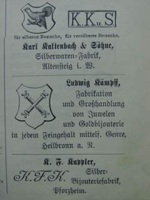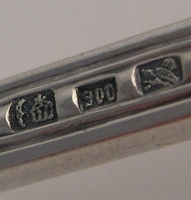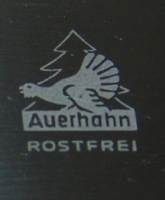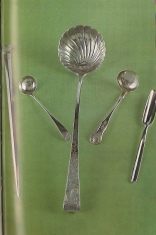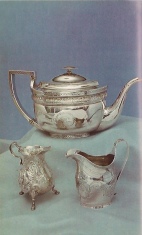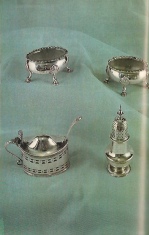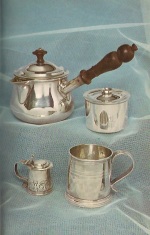2010 ASCAS membership
LAST WARNING
Members still interested in ASCAS and its activity are
invited to send an e-mail to:
confirming their 2010 membership (the simplest way is to
use the 'reply' button on our January e-mail).
No action is requested to unsubscribe. Members not confirming
their membership will be automatically deleted and shipping of
our monthly Newsletter will be suspended on February
2010.
Please IGNORE this announcement if you have already confirmed
your interest, by email, within the last month.
Giorgio Busetto
ASCAS Secretary

David McKinley presents:
An Intriguing English Spoon 
.....Towards the end of the 17th century when the
English habit of tea drinking moved from the commercial
background of the Coffee House to the social background
of the home, several items of what is now known as tea
equipage were introduced into the silversmiths'
repertoire. Largeworkers produced the tea kettle with
its stand and spirit burner for producing hot water at
the table and Smallworkers began producing teaspoons,
tea tongs (sugar tongs) and mysterious little spoons
described in The London Gazette of 1697 as "long or
strainer tea-spoons with narrow pointed handles......
click here 
|
Welcome to new ASCAS members:
Philippe Cocriamont - Belgium
Valerie Ensor - USA
Geoffroy Hermanns - Luxembourg
Joseph A. Giallanza - USA
Adam Kempton - Australia
Dee Morland - USA
Adriaan ter Meulen - USA
Stephen Lee Smith - USA
Members' Window # 68
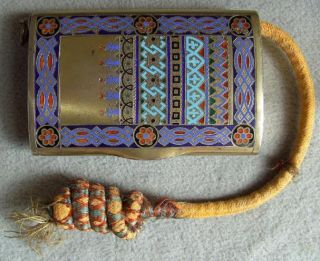
"Postnikov" presents:
Russian cigarette cases with tinder cord and match/striker
compartment 
The beginner collector of Russian cigarette cases finds
sometimes a strange looking container whose purpose is
not immediately clear: the cigarette case with tinder
cord and match/striker compartment.
Often I heard the following comment by dealers where I
found one of these cases:
"Because of the missing pencil I can give you the
case for half of the regular price" or "The
carrying chain for this lady's case is lost, but...."
click here 
|
Marina Fedeli writes:
...I'm researching information about the maker of this 19th
century candlestick with Milano (Italy) marks.
Any suggestion will be appreciated
Marina Fedeli
The maker is Emanuele Caber or Ditta Caber, Milano
1812-1870 under the sign of the "cervo" (deer).
Giorgio Busetto
Guillaume Bernard writes:
...I need your help about three marks found on a holy water
bucket (coming from Napoli?).
I’d greatly appreciate if you can identify these marks.
Regards
Guillaume Bernard
The water bucket bears the marks of Naples (Napoli).
The mark L over DF over C belongs to Leonardo Di Franco, console
(assayer) 1694-1696 and later in 1706.
The mark NA over 96 under a crown is the mark used in the year
1696 (town mark).
The mark G+S is the maker's mark. I didn't find this mark in my
literature. I found a similar mark (G dot S) of silversmith
Giuseppe Simioli (active 1694-1713) using the mark G.S.
Giorgio Busetto
Jaqueline Gori writes:
...I am desperately trying to identify and value a vase with the
attached hallmarks.
Have you seen anything like this before?
Best Regards
Jacqui
The maker of your vase is the firm "Luigi e Eros Genazzi",
Milan Italy.
Luigi Genazzi is a well known Italian silversmith born in 1876
and dead in 1946. The firm continued its activity under the
management of his son Eros Genazzi. The "lozenge" mark isn't
well readable, but I believe that your vase was made in the
1950s under the management of Eros Genazzi.
Giorgio Busetto
H. Dinerstein writes:
...I've a Russian silver cigarette case marked '875', lion and
initials JJ.
Can you identify, please?
H. Dinerstein
Your cigarette case isn't Russian but Estonian. It bears
marks used from 1924 to 1944.
The literature about Estonian silver of this period is very
scarce and I'm unable to identify the maker of your item.
A wide directory of Estonian and Latvian silvermiths realized by
'Postnikov' is now available in my website at
http://www.silvercollection.it/latviansilversmiths.html
Giorgio Busetto
Robin Darnell writes:
...I purchased what I believe to be silverplate stand or
centerpiece with an English registry mark. I have attached a
brief description and photo of the piece but really can't find
and direct information.
I found an inkstand that was sold for an American movie star at
auction and it has the same motif as my stand. I am not sure
this was made by Henry Wilkinson or that the name of the line is
correct in my description. Any information or opinion you might
have would be appreciated.
The piece is in six parts and in the photo the top is on upside
down as it was purchased. I woud like to find the bowl or tray
that fits on top of the stand or possibly have a duplicate made.
The inkstand in the auction was listed as Seward's Folly - Polar
Bear Garden and attributed but outside the British registry mark
is a stamp on each piece for a crescent and stars.
Thanks you for your time and consideration.
Robin Darnell
I hope that someone of ASCAS members will be able to help
you.
Meanwhile I can only suggest to try with Silver Magazine,
January/February 1986, where is published an article titled "Polar
Bear Ice Bucket" (unfortunately I can't verify as this copy of
Silver Magazine is missing by my collection).
Giorgio Busetto
Philippe Dupont writes:
...I have a silver pitcher with basin weighing about 4 Kg. It
bears French hallmarks and the maker's mark 'Armad Gross' inside
a lozenge.
I research any possible information about this piece and its
maker.
Thanks in advance.
Cordialement,
Philippe Dupont
I found this information about ARMAND GROSS:
- successor of M. Ferry
- 156 rue du Faubourg-Saint-Martin - Paris
- N° de garantie B668
- N° de Prefécture 11062
- date d'insculpation 31.10.1893
- symbol: A winged wheel
Giorgio Busetto
Christine Zachary writes:
...I have collected Old Sheffield for many years and find the
craftsmanship of this early work interesting and unique.
Recently I found a piece of silver over copper jewelry which I
believe is 18th century. Would anyone have any information on a
comparable piece, as I haven't found any comparables in books
I've looked at? It is unmarked and has a Georgian type clasp.
It is an oval flat disc with a raised design, and the drawing
itself is hand engraved.
Size 2 1/8 by 1 7/8 inches.
The woman appears to be dressed in an 18th century costume and
holds a young girl. Possibly a copy of a painting. The engraving
lines are deep. The face of the piece is 3 layers thick. The
background is cut away deepest, then the sofa and then the
figure.
Part of the silver is rubbed away in the background to expose
the copper underneath.
My question is, is this a type of rolled silver such as Old
Sheffield and has anyone seen a piece similar?
Thanks so much,
Christine Zachary
David Mckinley writes:
...I have been researching the Harache family of Huguenot
silversmiths for some time; I am currently concerned with John
Harache who called himself a jeweller and who has been
identified in Liverpool, England in late 1728.
I assume he was on his way to America and would welcome any
help, from fellow members in the USA, in tracing him there from
late 1728 or early 1729 onwards. Although he called himself a
jeweller he probably made small items such as spoons, sugar
tongs etc., and may have settled in one of the ports of entry
such as Boston or Philadelphia.
Thank you in anticipation,
David Mckinley
A hard challenge for our American readers.... But who
knows?
Giorgio Busetto
Neil McElroy writes:
...I was wondering if you could help identify the markings on
this silver cufflink that I found while metal detecting in
Eugene Oregon.
Any info you could give me would be great!
Thanks!!!
Neil McElroy
I believe that your cufflinks are Danish.
The mark with DA symbolises "Thor's" (an ancient German god's)
hammer: That mark was sign of private Danish Trade Promotion
Association «Landsforeningen Dansk Arbedje» (Promotions
signification: "Quality Product - Made in Denmark" and "Buy
Danish Quality Products") from 1908 on - with promotional
activities for all kind of Danish products - not only for Silver
or Plated - in Denmark and abroad. "DA" is since 2002 part of a
Danish merger for "Worldwide Trade Promotion" (see the answer of
Oskar M. Zurell in our November 2009 newsletter at
http://www.ascasonline.org/newsNOVEMB66.html ).
I don't know the other mark. I trust in the help of our expert
members.
Giorgio Busetto
Christophe Ginter writes:
...The following Dutch silver maker was active after 1814.
Does one ASCAS fellow member know about him?
Thanks
Christophe
Ann Daniel writes:
...I found these two spoons and a few others at a thrift shop a
few years ago.
Can anyone tell me the dates and if they are electroplate or
silver?
Ann Daniel
You can find the information you need (years 1852 and
1865) in my website at
http://www.silvercollection.it/Elkington.html
Obviously your spoons are electroplated silver and not sterling
silver.
Giorgio Busetto
ASCAS receives these mails following the publication of
David McKinley's article "
THE BACKGROUND TO 'DUTY DODGERS' " in December 2009
Newsletter
Dear Giorgio,
I read the interesting article by David McKinley - The
Background To "Duty Dodgers".
It is very interesting and well written, nevertheless, I do not
agree with the final sentence:
"The marks on the base of the coffee pot shown in the December
newsletter are a mixture of a pre 1739 date letter, with its
heater shield outline, and 1739 to 1755 lion and leopard with
their indented outlines and thus the pot is easily recognisable
as a ‘Duty Dodger’!"
It is my opinion that all the set of hallmarks is from London
1668 (probably taken from an item of that period), apart the
maker mark that, according to Jackson (1) is Richard Green (registered
in 1726).
Please consider the following observations:
- in the London hallmarks series 1739 – 1755 the indented
outlines follows the lion passant only at the base
- although not completely struck, the leopard head seems to have
a beard (not present in the 1739-1755 series)
- the shape of the coffee pot (apart the flat chasing work which
was surely applied later) indicates a pattern dating 1725 –
1735, not longer in use in 1739 – 1755.
Please have a look of the example of hallmarks of both periods
attached to this mail.
Kind regards
Giovanni Ciceri
(1) Charles J. Jackson , 1964. English Goldsmiths and their
marks - A history of the goldsmiths and plate workers of
England, Scotland and Ireland. Second revised edition. Dover
Publications Inc., New York.
hallmarks London 1672
hallmarks London 1673 Peter Downeham
hallmarks London 1676
hallmarks London 1742 John Fossey
Dear Giorgio,
I have read Giovanni's remarks and agree about the maker. This
is of interest because, as he was both a Liveryman and a church
warden, it shows that even respectable goldsmiths were not above
this sort of fraud.
I have checked some of my references and must also agree that
coffee pots of this design were still being made in the reign of
George I but I was not implying that the pot was of the 1739 to
1755 period, only that the marks appeared to be.
As I said earlier I am quite happy to concede that they could be
1668.
Incidentally Giovanni states that the indented top of the lion
outline was only common to the 17th century period. Actually
there was an alternative punch of this sort produced somewhen
between 1739 and 1755. It is not known exactly when this punch
came into use because only the date letters were recorded (using
printer's ink in the margin of the minute book) until 1760 when
the lions and leopards make their first appearance.
All of this shows how difficult it is to be sure of hallmarks
but the style of this coffee pot is such that whether the marks
were 1668 or 1739/55 it must be a duty dodger as Giovanni said
in his original article.
I am glad Giovanni found my article otherwise useful.
Regards,
David McKinley
Replies to questions
Oskar M. Zurell writes:
In yours preliminary answer in actually # 67 to "Auerhahn" (grouse)
flatware question by RJ Spencer I remember directly a fault of
Mrs. Waliczek, vol. 3, p. 92, nr. 493-495; she has placed wrong
(!) in Stuttgart; but it is in Altensteig/Württemberg (a little
old town in Black Forest area). Popular collectors name is "Auerhahn"
(grouse); now a subsidiary of WMF - merged around 2000 or later.
I add an excerpt photo of "Auerhahn" maker's mark. The grouse
stand for Silver; letters for Plated!"(Actually they mark also
by their full name AUERHAHN - but I haven't actually any example.)
Actually I couldn't give additional information to pattern
question by RJ Spencer; because it was and still is out of my
preferred stylistic range of Art nouveau/Art deco. It's made in
by me so (derogate!) called "Art eclecteau" (= "Art eclectic").
But I will look out to find an answer on pattern by "Auerhahn"
PR department. Pattern style is (company is founded 1870) after
1871 and before 1900; maybe 1890? Production of this pattern was
at least until 1914 - but had maybe a bourgeois revival from
1918 to 1945?"
Kind regards,
Oskar M. Zurell
"A PAGE per MONTH"
In this column we present a page
obtained from makers' brochures, books, auction catalogs,
advertising or whatever other printed paper, related to silver,
that may be of interest for ASCAS members.
The images will be published at a "low resolution" level and for
private and personal use only
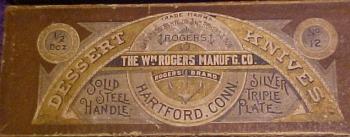
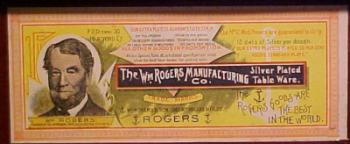
|
This month ASCAS presents an ancient cardboard case
containing 12 Dessert Knives manufactured by The Wm.
Rogers Manufg. Co, Hartford, Conn.
THE Wm ROGERS MANUFG. CO
HARTFORD, CONN.
12 DESSERT KNIVES
Solid Steel Handle - Silver Triple Plate
The firm was organized in 1865 by William Rogers and his elder son Wm.
Rogers, jr. The firm manufactured plated silverware and
in 1879 took over the Rogers Cutlery Co. (manufacturers
of silverplated flatware and steel cutlery). The firm
became part of International Silver Co. in 1898.
|
"A WORD per MONTH"

|
FIDDLE SPOON
The "fiddle"
pattern had its origins in France about 1675, but is not
found in English silver until a century later. Its
handle's shape resembles a fiddle (violin) with the stem
like a finger-board and the body with smooth parallel
sides extending towards a rounded terminal.
This pattern was also very common in American coin
silver, was highly popular in the early part of the 19th
century and generally replaced the Old English as the
most popular pattern.....
more
|
"A SILVERSMITH per MONTH"
|
|
HAYNE & CATER
The business of
manufacturing silversmith was commenced by Thomas Wallis
sr. in 1758 c. He was succeeded in 1777 c. by Thomas
Wallis jr. who in 1810 entered in partnership with
Jonathan Hayne.
The partnership was dissolved in 1816 and in 1821
Jonathan Hayne entered his first mark.
In 1836 his son Samuel Holditch Hayne entered a new mark
in partnership with Dudley Frank Cater (a former
apprentice) under the style Hayne & Co., assuming full
control of the firm after the death of Jonathan Hayne
(1848).....
more
|
"A BOOK ON MY SHELF"
In this column we present books, new
or ancient, dealing with silver in all its aspects (history,
marks, oddities...). This isn't a "book review" but only a fair
presentation of some useful "tools" that anyone may have in the
shelf of his bookcase.
ASCAS members are invited to contribute to this column
(click to enlarge images)
The "book on my shelf" of this month presents:
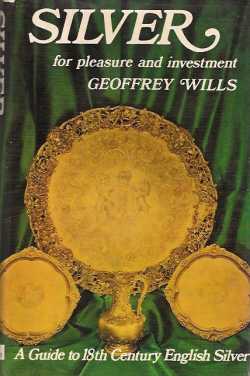
|
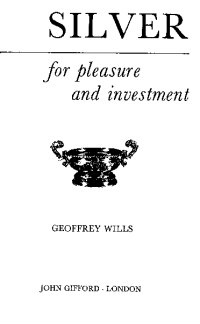
The author writes in book's
preface:
While the word 'investment' appears in the sub-title
and may lead a reader to expect some kind of list of
prices, none has been provided. Such guides are of
little or no use through being out-dated as soon as they
are written. They can refer only to a particular item in
a particular occasion, whether in an auction-room or a
shop, and generalisations are not helpful in connexion
with antiques. Thus, the only worthwhile course for a
potential buyer is to go to a reputable dealer and
remember the epigram of Benvenuto Cellini, the sixteenth
century Florentine artist, silver-smith and sculptor.
His words, which incidentally form the motto of the
British Antique Dealers' Association, were: Ars non
habet inimicum nisi ignorantiam: Art has no enemy except
ignorance. It is to be hoped that this book will
contribute to the reader's knowledge and enjoyment, and
enable him to invest with confidence.
|
"A CREST per MONTH"
In this column we present images
and descriptions of Crests and Mottoes of British, Irish and
Scottish families as engraved on silver items.
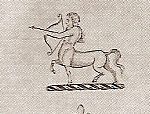 |
LAMBERT
An Irish family. A
centaur shooting an arrow from a bow.
The crest is engraved on a square shaped salver,
hallmarked John Hamilton, Dublin 1739-41, with an
applied border of quatrefoils and acanthus leaves.
|
The center is chased with a figure of a
mounted racehorse surrounded by the inscription
"A FORTY POUND PLATE GIVEN BY YE GENTLEMEN OF YE
COUNTY OF GALWAY RUN FOR YE COURSE OF PARK YE
19TH OF SEPR.1741 BY HORSES &C CARRYING TEN
STONE" underneath "WON BY CHARLES LAMBERT'S
HORSE CAESAR'"
|
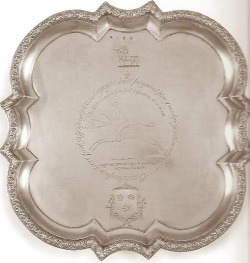 |
Closing our January 2010 edition of ASCAS
Newsletter I hope you have appreciated its content.
Your comments, suggestions and advice will be of great help.
My thanks to Guillaume Bernard,
Giovanni Ciceri, Ann Daniel, Robin Darnell, H. Dinerstein,
Philippe Dupont, Jayne Dye, Marina Fedeli, Jaqueline Gori, Neil
McElroy, David McKinley, Postnikov, Christine Zachary, Oskar M.
Zurell for their invaluable contributions.
Giorgio Busetto
Secretary
DISCLAIMER AND PRIVACY POLICY
ASCAS is a community of people having a common
interest in antique silver.
It is a non-profit association without commercial links.
Membership is open to whomever has a true interest in
this subject matter.
ASCAS has no real property and no fees are requested nor
accepted from members.
ASCAS keeps in touch with its members only through
periodical newsletters, e-mails and web-site updating
and ignores and is not responsible for any other
activity pursued by its members.
Likewise, ASCAS is not responsible for opinions,
evaluation and images displayed, and in any form
published or supplied for publication, by its members
who, in any case, maintain the property of their works
and assure the respect of national and international
legislation about Intellectual Property.
ASCAS does not have the full addresses of its members (only
town, country and e-mail address are requested for
membership).
ASCAS handles and protects with care its members' e-mail
addresses, will not disclose the addresses to third
parties, will use this information only to reply to
requests received from members and for communications
strictly related to its activity.
These rules are expressly accepted by submitting the
membership request.
|
|
 newsletter
# 68 JANUARY 2010
newsletter
# 68 JANUARY 2010





